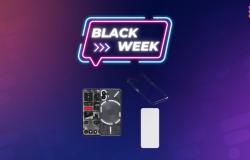As 2024 draws to a close and the dawn of 2025 dawns, Six Senses Wellness Pioneer reflects on the wellness trends of today and tomorrow.
Wellness tourism is diversifying significantly as today’s different generations, in search of enlightenment, strive to achieve mental, spiritual and physical well-being. For nearly 30 years, Six Senses has pioneered extraordinary wellness initiatives that take guests beyond the destination, to new discoveries. Visitors to its 27 locations around the world indulge in the care of forward-thinking therapists, practitioners and experts who offer an extensive and evolving range of treatments, allowing clients to go as far as they wish .
Read also: 5 tips from a sports addict to achieve your goals
Wellness pioneer Anna Bjurstam leads the Six Senses wellness program. With over 25 years of experience, Anna is at the forefront of what it means to feel good mentally, physically and spiritually. Her role is underpinned by curiosity and knowledge, she infuses her unique approach to healing to bring balance and harmony to holistic wellbeing. Here, Anna gives us her views on what will shape the wellness sphere in the year to come.
Well-being trends in 2025
Say goodbye to your clothes
“Technology has allowed us to adapt to the patterns and processes of our bodies. Today we seem to track everything from fertility to fitness. However, should humans be indebted to AI for eternity? This reliance on devices can give a less accurate reading than if we listened to our body and the signals it sends us. Many of us can attest to the fact that technology tells us when we haven’t slept well and, as a result, feel tired and foggy for the rest of the day. Wearable devices are useful for obtaining practical information, especially when worn for a limited time to collect data or as part of ongoing research, but it is always possible to find intuitive ways to deliver the people in tune with their biology and the natural rhythm of their body.”
Non-invasive analytics (such as wearable devices) can be a first step towards lasting improvements. For example, the Six Senses sleep tracker is a handy bedtime partner because it records how light, noise, and temperature affect the client’s sleep. However, Six Senses programs teach clients to listen to their body the way biology intends, guiding them on how to experience harmony within their biological system, taking a holistic approach to self-healing by helping to align the physical, mental, emotional, spiritual and energetic.
Welcome the present moment
The increase in the number of “spiritual journeys” highlights the growing interest in a more meaningful way of life. Gone are the days of striving for perfect images to feed social media. Instead, and quite refreshingly, we are noticing that more and more people are ridding themselves of distractions to discover simplicity, focus, and a greater sense of self-awareness. A deeper connection to something bigger than yourself… your place, your purpose, or the people around you. What was considered niche is now very popular with customers of all ages and children love the tactile nature of our sound bowls and mazes.”
Six Senses recognizes that travel is not only an outward journey, but also an inward journey. Spiritual wellness combines evidence-based brain science (wonder walks), social wellness (communal tables and conversation cards), the power of disconnection (digital detox), and mindfulness (meditation in various forms) to encourage guests to disconnect from daily distractions. This allows them to fully connect to the present moment, discover their North Star, and awaken to the inspiration and forgotten passions that stimulate their spirit. In addition to introducing sound healing rituals and sound bowls to the 27 Six Senses locations around the world, many locations are incorporating sacred geometric patterns such as mazes to connect with the energy of the space. A clarifying full moon ritual or fire ceremony can also help cleanse the energetic and spiritual body, ridding itself of what no longer serves, and providing new meaning or purpose.
Focus on good sleep
“Holiday disruption offers the opportunity to get a good night’s sleep, but more than that, it provides an opportunity to tackle sleep issues. The main challenge is the many variables that can affect good sleep, whether it’s diet, exercise, caffeine, screen time, stress or other factors. linked to lifestyle.
Sleep tourism began to grow at the end of 2022 and this trend will only continue to grow. Last year, the American Psychological Association noted that 37% of American adults were looking to improve their cognitive functioning and manage stress and anxiety. Last year, little changed. Sleep continues to be the number two health and wellness priority for consumers and, perhaps as a direct result of the increasing dependency and demands of digital devices, the Global Wellness Institute notes an increase of 17, 5% of us suffer from good quality, regular sleep.”
Live long and live well
“Life expectancy is the new buzzword in well-being: it’s no longer about living long, but about living well. Those aged 50 and older are much more active, with Generation X accounting for 30% of the $282 billion adventure market and about 38% of the lifestyle and jetsetter market.
While longevity was once considered a fringe phenomenon, there is growing evidence that humans can actually slow the rate of aging. Everything from biohacking to blue zones has become a common topic of conversation and Sunday supplements. However, the quest for longevity is a personal journey and while Six Senses cannot promise a magic elixir or holy grail, it can offer science-based insights and lifestyle inspiration.”
Focus on solidarity
“We live in a time of epidemic of loneliness. More and more people are living alone or adopting an itinerant lifestyle while traveling, making it more difficult than ever to find human contact. As we learn from Blue Zone regions, where people live long lives, rich social interactions are essential for longevity. People are increasingly looking to find their clan, connect with like-minded people and feel part of a community, no matter where they are in the world.”
Seek pleasure
“Many things make us feel happy, but not all sources of dopamine are equal. Simply put, good dopamine makes us feel good, while bad dopamine has the opposite effect. This vital neurotransmitter is essential for regulating reactions such as movement, emotion, motivation and the feeling of pleasure, but modern stress wreaks havoc on our nervous system.
Too often we operate on autopilot and fail to register behaviors that could negatively impact our nervous system. These include reaching for your phone first thing in the morning, binging on junk food, and neglecting exercise when pressed for time. Rather, being aware of the things that make us feel good, like being surrounded by loved ones, visiting amazing places, and exploring our passions, can allow us to find the feel-good factor. -be in more positive places. By becoming aware of the activities that influence our response to dopamine, we can naturally regulate our nervous system and promote better hormonal harmony by adopting healthier habits. »
Regulation of the nervous system can come from any somatic experience or body-focused therapy. At Six Senses, Watsu is offered as a form of water therapy in a heated pool, a subtle and gentle form of therapy where the body intuitively rebalances the mind. Beyond traditional wellness retreats, Six Senses also offers creative retreats, including mindful writing to release rigid narratives and allow stories to flow from a place of openness, as well as a Ikagai to create a space for personal discovery and explore purpose. There’s always room for celebration, like the Alma Transformational Wellness Festival, where visionaries, healers and spiritualists guide a program of longevity practices, spiritual reconnection, movement and dance.
Maintain hormonal health
“Hormones play a vital role in all facets of our health, from mood to energy and from libido to hunger, but they only appear in our conscious awareness when there is an imbalance. Fluctuations are normal – women experience them during their menstrual cycle. Men, too, can expect similar symptoms – fatigue, mood swings, loss of muscle mass and others – as testosterone declines with age. The World Economic Forum recognizes the gender health gap, with one of the key areas being the persistent lack of data on female hormones and health, as well as the lack of data available for women4. What is relevant is that this research sparks conversations that will hopefully have a positive effect on destigmatizing the seasons of life and allowing people to embrace the beauty of aging. »
Also read:






